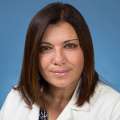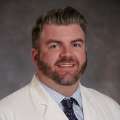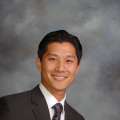Three days after terrorists flew two jumbo jets into the World Trade Center on September 11, 2001, collapsing the Twin Towers and killing nearly 3,000 people, ABC News journalist Scott Shulman boarded a corporate jet in Los Angeles to fly to New York to cover the national tragedy.
For nearly two weeks he stayed at Ground Zero, working 12-hour shifts operating a satellite uplink truck to feed reports and images of the recovery efforts back to the network. “It was a smoldering pile,” Shulman says. “We were constantly breathing smoke, ash and dust.”

The crumbling skyscrapers spewed a toxic blend of jet fuel, glass, paint, concrete and steel that contained a host of known carcinogens — asbestos, beryllium and benzene, among others — that hung in the air for weeks.
Few knew the danger of breathing suspended particulate matter. “Today, every single recovery worker would be wearing an N-95,” Shulman says. “But nobody was wearing masks back then.”
The immediate death toll on 9/11 reached 2,977, including people on the two other planes that crashed into the Pentagon and in Shanksville, Pennsylvania. September 2021 marked the 20th anniversary of the event, and the toll in disrupted lives and misery continues to climb. Since that Tuesday morning in 2001, more than 110,198 responders, who came to Ground Zero from every state, and survivors, who were living, working or attending school within the “exclusion zone,” have enrolled in the Centers for Disease Control and Prevention’s World Trade Center Health Program. They suffer from a multitude of ailments that include chronic rhinosinusitis, pulmonary disease, gastroesophageal reflux disease (GERD), asthma, sleep apnea, post-traumatic stress disorder, anxiety, depression and cancer. Shulman is among them.
Of those who registered with the program, 4,343 have died.
Two decades later, doctors continue to learn new things about the lingering health impacts of 9/11 on people’s lives. “We’re still in prime time for learning what the long-term consequences are going to be,” says Russell G. Buhr, MD (FEL ’17), PhD ’19, assistant professor of pulmonary and critical care medicine, who has treated National Guardsmen who were at Ground Zero. “We still have a lot to learn. Whether it’s 9/11 or the wildfires of California, something like this will help us understand how to mitigate the health risks of other crises.”
Like thousands of others, Shulman’s 9/11 experience affected both his psyche and health. His seemingly endless sinus infections began a year after; they got so bad, that the infections eventually led to bone loss in his jaw and the loss of one of his teeth. “I basically had a sinus infection for 17 years,” says Shulman, who this year retired as an ABC Network news producer. “When I got one, I could feel it in my teeth.”

Chronic rhinosinusitis, which affects 15% of the U.S. population, is the top certified condition of the WTC Health Program; 32,925 people registered for that condition.
Jeffrey D. Suh, MD ’03 (RES ’09), associate professor of head and neck surgery, began treating Shulman for sinusitis in 2018. He corrected Shulman’s deviated septum and performed endoscopic surgery to open up his sinuses. “With the massive amount of chemicals, pollutants, dust, mold — everything that would be in those buildings — it could make someone who already did have sinus problems worse, or someone who never had sinus problems start. It would definitely exacerbate things,” Dr. Suh says.
But Shulman’s problems were not limited to his sinuses. He also suffered pain and inflammation in his throat, and a persistent cough. “I knew by 2002 that my health was being affected, but I couldn’t put my finger on it,” he says.
Seeking answers, he underwent several medical exams and procedures. Finally, in 2017, a CT scan of his heart that he had while preparing for shoulder surgery led to a frightening finding: His lungs were filled with nodules. Doctors told him he had what appeared to be a rare inflammatory disease called sarcoidosis.

Shulman and his wife, Cipra, were terrified when they heard the news. “We didn’t know if I was living or dying when we saw these nodules in my lungs,” Shulman recalls. “We looked at each other — we didn’t know if it was leading to a cancer diagnosis or if it was going to get worse or better.”
He found his way to Joseph P. Lynch III, MD, Holt and Jo Hickman Endowed Chair of Advanced Lung Disease and Lung Transplantation at UCLA, who is an expert on sarcoidosis. Dr. Lynch confirmed the diagnosis and spent 90 minutes explaining the condition to the couple.
“He explained this weird disease, and how it could affect me,” Shulman recalls. “Sarcoidosis can kill you if it gets into your heart. It’s an auto-immune disease. It’s your body trying to rid itself of these toxic dust remnants. It is stealthy, and odd, but it was incredibly comforting to know that Dr. Lynch was looking out for me.”
Shulman is among six 9/11 patients Dr. Lynch has treated. Sarcoidosis, Dr. Lynch says, has been found at significantly higher rates among 9/11 responders than among the general population.
Dr. Lynch has used prednisone to treat sarcoidosis in the acute stage, and he has seen reversals. But if someone is diagnosed weeks, months or years later, ste - roids are ineffective. Fortunately for Shulman, although he showed typical findings of sarcoidosis, his case was “mild to moderate,” Dr. Lynch says. “His lung function was around 85% of normal, his oxygen was normal and his lungs sounded clear. He never really felt short of breath. He would go on five-mile-plus hikes and exercise every day. His exercise capacity was above normal. He was pretty stable.
“I don’t overtreat,” Dr. Lynch says. “The most important thing I do is I keep people out of trouble.”
THOUGH UCLA IS 3,000 MILES FROM THE SCENE OF THE EVENT, its medical experts have treated people suffering consequences of 9/11’s aftermath.
Among them have been combat veterans of the post-9/11 wars in Iraq and Afghanistan, who continue to receive treatment through UCLA’s Operation Mend and FOCUS: Families OverComing Under Stress. UCLA has also been pivotal in helping children of 9/11 responders and survivors cope with trauma and stress.
The UCLA-Duke National Center for Child Traumatic Stress was awarded federal funding on September 11, 2001, and it began operating the next month. The network led by UCLA-Duke began with 17 centers, but nine more were added within a year to support families in New York, Pennsylvania and Washington, DC, impacted by 9/11. Today, there are 140 centers, and the program just received $40 million for five more years from the Substance Abuse and Mental Health Services Administration.
“September 11 really shook our concept of what is safe,” says psychologist Melissa Brymer, PhD, director of terrorism and disaster programs for the UCLADuke National Center for Child Traumatic Stress. “It made us feel vulnerable in terms of how our lives could change so dramatically.”
Dr. Brymer knows this from personal experience; her cousin was a NYFD battalion chief who was killed in the collapse of the second tower. And in her professional life in the years since, Dr. Brymer has unfortunately seen more than her share of trauma. She was the lead advisor to Newtown Public Schools in Connecticut following the mass shooting at Sandy Hook Elementary School in 2012, and her team also responded to Hurricane Katrina, the 2017 mass shooting during a music festival in Las Vegas and, most recently, the COVID-19 pandemic. “We have set up a national program to increase training of mental health providers in child trauma and in evidence-based trauma and grief interventions, whether it’s after natural disasters or a violent event. We really think about the current best practices of addressing all types of child trauma.”

Dr. Brymer emphasizes the importance of ensuring the people who are affected by a crisis such as 9/11 receive both physical and mental health treatment. “We’re 20 years out, and the data are showing that people are still not getting access to the services they need,” she says. “We need a longer timeline to make sure people are getting high quality health and mental health care and that we make these services accessible for all impacted.”
Dr. Buhr, a pulmonologist, also believes a long-term approach is needed. He is particularly concerned about the lag time between environmental exposure and the appearance of disease. “You breathe on average somewhere between five and 15 liters of air every minute of every day, awake or asleep, and everything in that air touches the inside of your lungs,” he says. “The world and the environment around us become a lot more important.”
This can be especially important for “those who care for us,” people like the Ground Zero responders and firefighters and frontline workers during the COVID-19 pandemic, Dr. Buhr says. “The exposures that people got on 9/11 offer a window into what happens if you get a huge dose of dust or toxic pollutant in a concentrated period of time. We can learn from events like 9/11 and use them as ways to improve health trajectories, whether it’s changing to building materials that are less toxic or disposing of bad stuff more carefully.”
LONG-TERM SURVEILLANCE IS ALSO CRUCIAL for physicians who treat cancer in responders. The rate of thyroid cancer, leukemia and prostate cancer has been significantly higher for police and 9/11 recovery workers than for the general population, according to a study of 29,000 responders.
Maie St. John, MD (RES ’05), PhD, chair of the UCLA Department of Head and Neck Surgery, treated a 9/11 firefighter who was in his mid-40s when he presented with tongue cancer. Dr. St. John cites a CDC study that found a 40% increase in diagnosis of head and neck cancers among first responders between 2009 and 2012. “More research is needed to untangle if it really was the first exposure or was it changes in personal habits, such as stress-induced smoking or multiple sexual partners,” Dr. St. John says. “But given that the first responders had higher rates than people who came later, there may be something to the initial exposure of toxic gases. The first responders inhaled debris clouds that had many known carcinogens.”
Dr. St. John also advocates for more research to identify biomarkers for head and neck cancers, which are often first noticed by dentists or by people who find a lump. “Just as we all have experienced during the COVID-19 pandemic, 9/11 is a similar kind of event in terms of the emotional loss, the human loss, as well as its continuing fallout,” she says. “We need to continue to think about what we can do to identify biomarkers and make sure we have long-term monitoring of disaster survivors and responders.”
Prostate cancer typically affects older men. But urologic oncologist Nicholas M. Donin, MD (FEL ’17), whose wife was an undergrad at NYU on 9/11 and witnessed the collapse of the first tower, cites a peer-reviewed study in 2019 that appears to indicate an increased risk of aggressive prostate cancer among first responders.
“There are signs that suggest that the carcinogens present in WTC dust could promote a pro-inflammatory state that could then initiate development of prostate cancer,” Dr. Donin says.
He notes that research has revealed similar findings in rats exposed to the dust. The findings suggest, though more research still is needed, that not only might the toxic agents present in the dust at Ground Zero have led to development of prostate cancer, but also to particularly aggressive forms of the disease, Dr. Donin says.

The medical lessons learned from 9/11 will continue for decades. Dr. Lynch notes the voluminous post-9/11 medical literature that has come out focusing on lung diseases. First responders not only had greater severity of symptoms, but also multiple resulting medical conditions, from asthma to sinusitis to sarcoidosis to rare forms of bronchitis, pneumonia and cancer.
IN THE YEARS SINCE 9/11, Shulman has battled for his health. He feels that he has been relatively lucky; he knows others who lost their fights and have died as a consequence of their exposure at Ground Zero.
His battle has often been difficult, with numerous bureaucratic hurdles to overcome to receive the care he needs — and he believes deserves.
“This has been a real emotional burden on my wife and me,” he says. “The hardest thing for me has been what I’ve put my wife through. She’s my best friend. My health is paramount to her, and her health is paramount to me.” When he and Cipra together looked at the scans that revealed the sarcoidosis nodules in his lungs, “It was more painful for me to watch her reaction than it was for me to think about myself in that moment.”
In January 2018, Shulman presented his case to a CDC panel, which would review his medical records and decide if his health conditions were related to his exposure at Ground Zero. If the panel decided in his favor, his care would be covered by the WTC Health Program. A few months later, Shulman was accepted into the WTC Health Program for three 9/11-related conditions: interstitial lung disease (sarcoidosis), rhinosinusitis and GERD, the cause of his painful reflux.
“Oh my God, I cried,” Shulman says of the moment he received the notice. “I couldn’t believe it. It felt like this incredible validation, after 17 years, that what I was going through was due to my exposure.”
These days, Shulman walks several miles a day and rides his bike to keep his lungs strong, and he says that he is doing much better. He feels that now, under the care of physicians like Dr. Lynch and Dr. Suh at UCLA, his health concerns finally are receiving appropriate attention.
“My wife and I have peace of mind,” he says.
In addition to his doctors, Shulman also credits 9/11 advocates who have lobbied Congress to fund relief programs for responders and survivors. The Memorial Glade dedicated in 2019 at the 9/11 Memorial & Museum on the site of Ground Zero recognizes those responders, recovery workers and survivors who, like Shulman, have suffered “long after September 11, 2001 from exposure to hazards and toxins that hung heavy in the air.”
“People still are dying from their exposure to the toxic dust,” Shulman says. “I’ve been very lucky. Maybe I’m suffering from something that makes me cough or makes me feel that I’m not 100% healthy. But I’m still alive.”



